|
Steppes Hill Farm Antiques Newsletter #92 - April 2019
|

|
Early 19th Century Silver Caddy Spoons
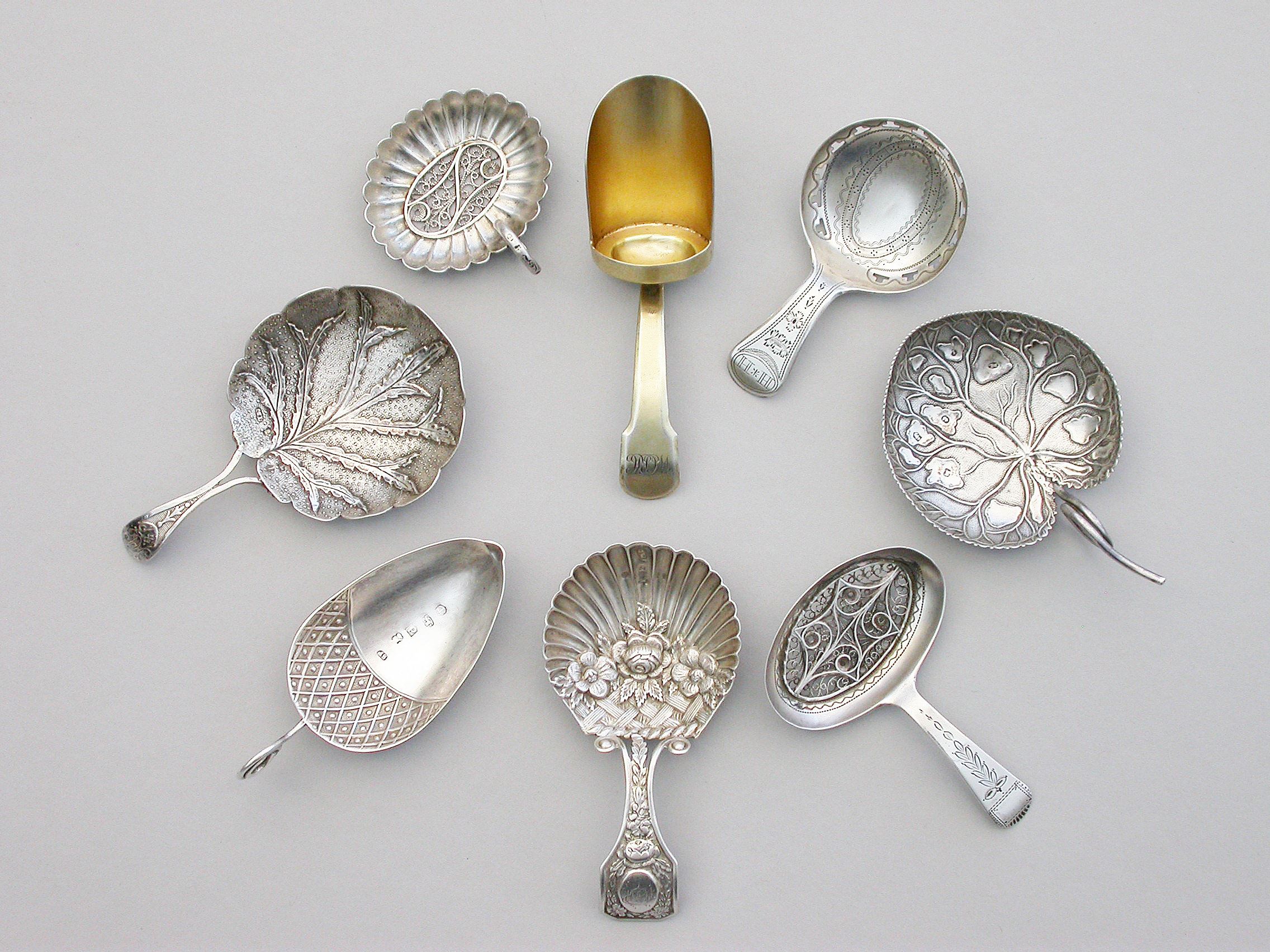
In last months SHFA Newsletter I discussed silver Caddy Spoons from the Arts & Crafts period at the beginning of the 20th century. Along with other silver from this fashionable time, they have become very popular and quite saleable. However, this month I would like to feature a selection of Georgian silver Caddy Spoons from the first 30 years of the 19th century, which to my mind still remains the "Golden Age" of the Caddy Spoon.
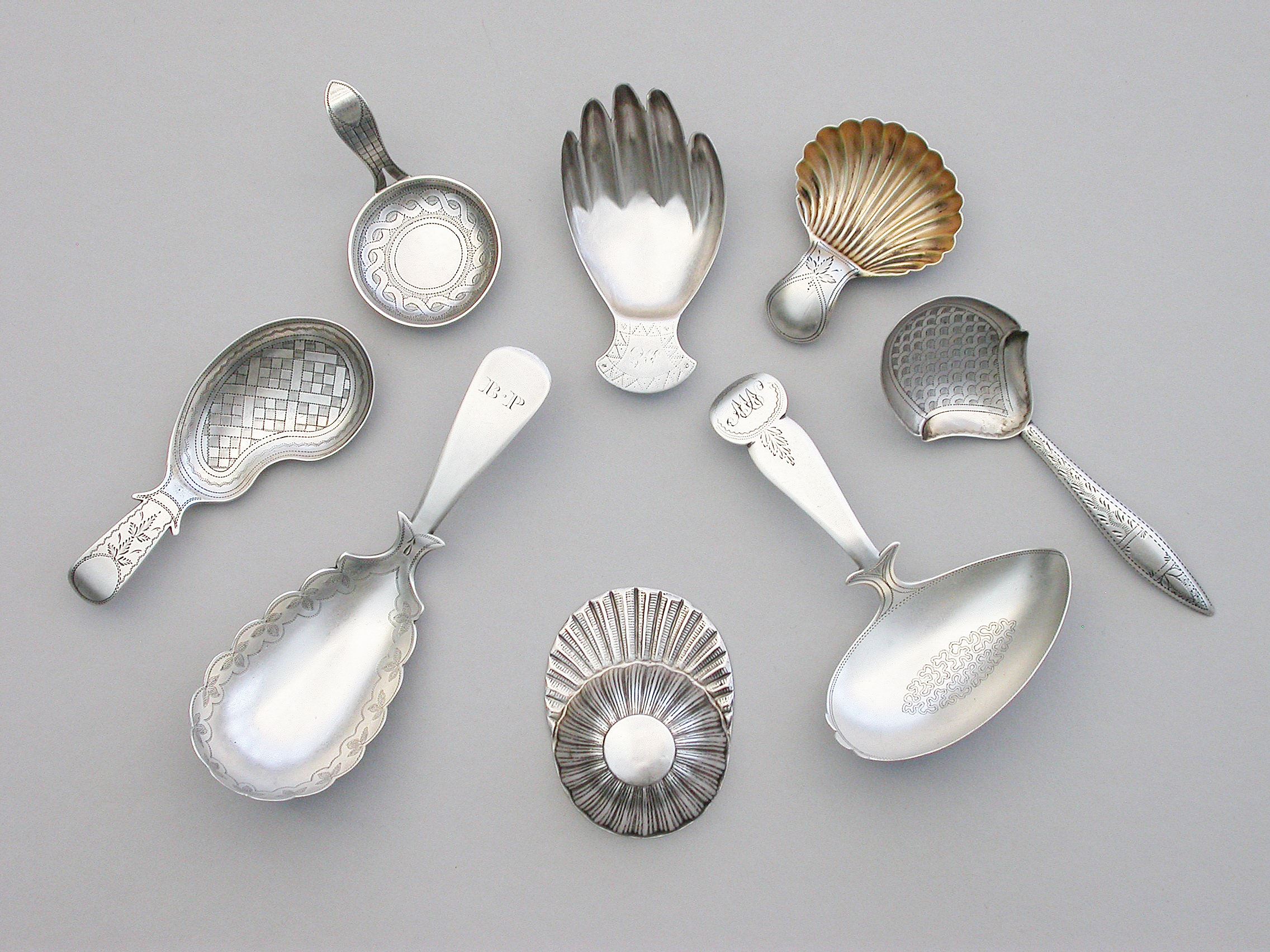
Whilst a number of Caddy Spoons from this period were based on the standard Flatware patterns in vogue such as 'Old English' and 'Fiddle', it was also an era that saw imaginative design and developing techniques in silversmithing. It was the period for "Novelties" and specialties included 'Jockey Caps', 'Hands', 'Leaves', 'Acorns' and even an 'Eagles Wing'. A Jockey Cap from Birmingham, by Samuel Pemberton 1799 and a Right Hand by Josiah Snatt of London are illustrated here.
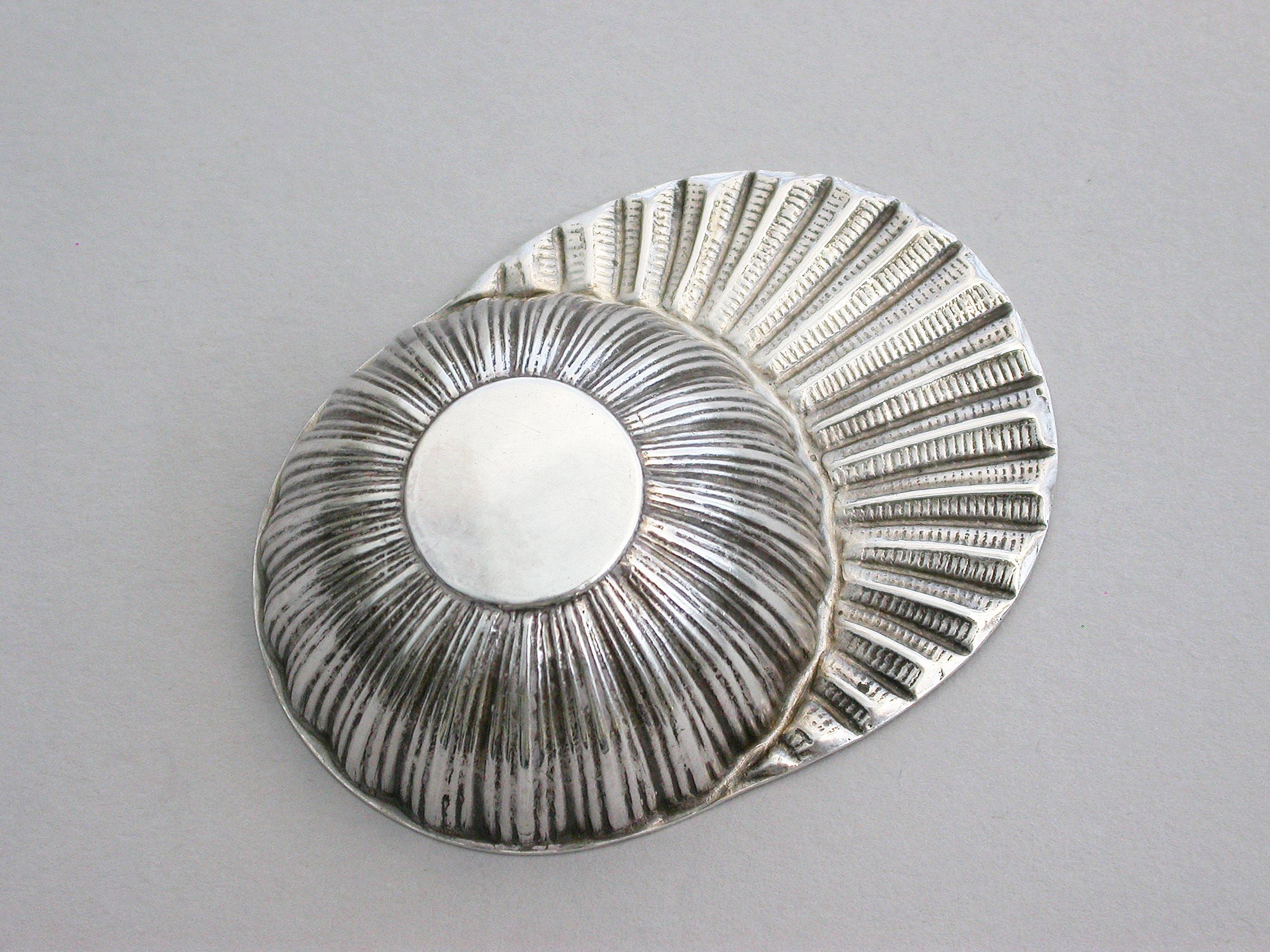 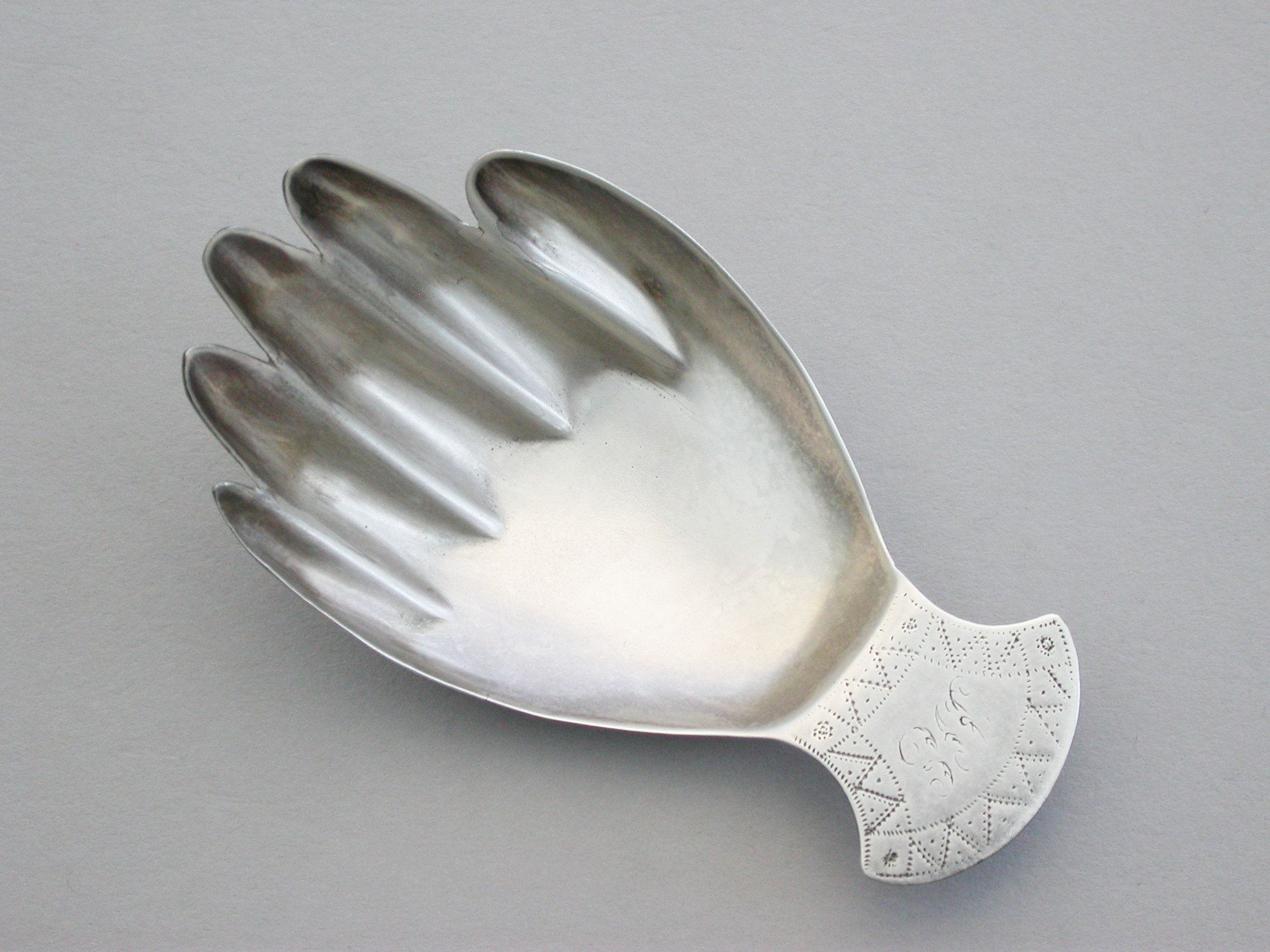
Although starting some 15 years later than London or Sheffield, it was Birmingham that became the centre for Caddy Spoon production. From about 1800 onwards there was an explosion in the number of spoons emanating from the city. Caddy Spoons were part of the so-called 'Toy Trade' that encompassed all manner of small silver novelties such as Vinaigrettes, Nutmeg Graters and Snuff Boxes etc. The Birmingham 'Toy Maker's' excelled at the trade and were very prolific.It might have been mass production, but extraordinary and delicate skills of silversmithing, chasing and engraving can be observed. One of the most prolific makers was Joseph Taylor, and the two bright-cut engraved Spoons with pierced bowls, one with an unusual filigree insert, shown here are typical and particularly fine examples.
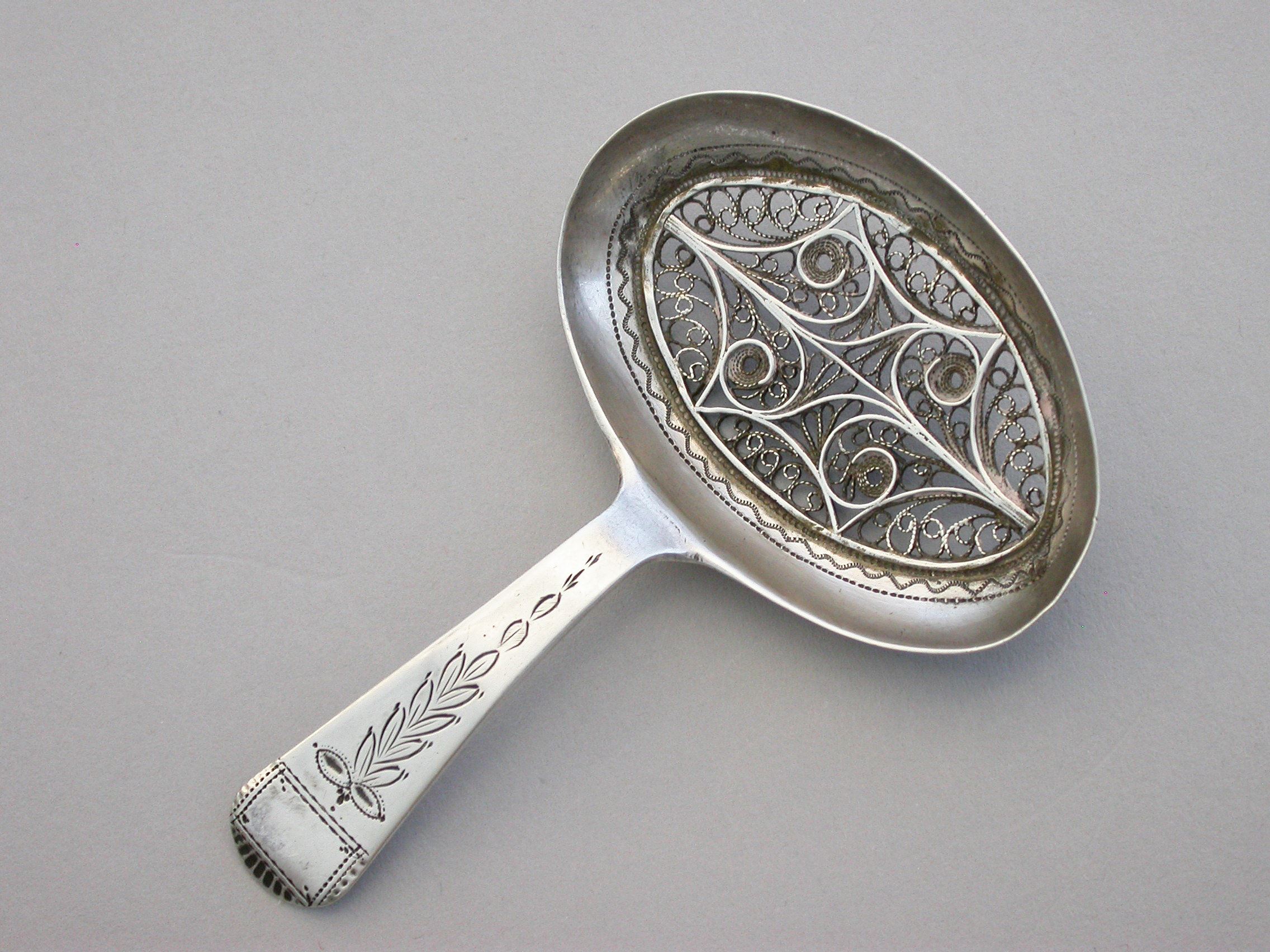 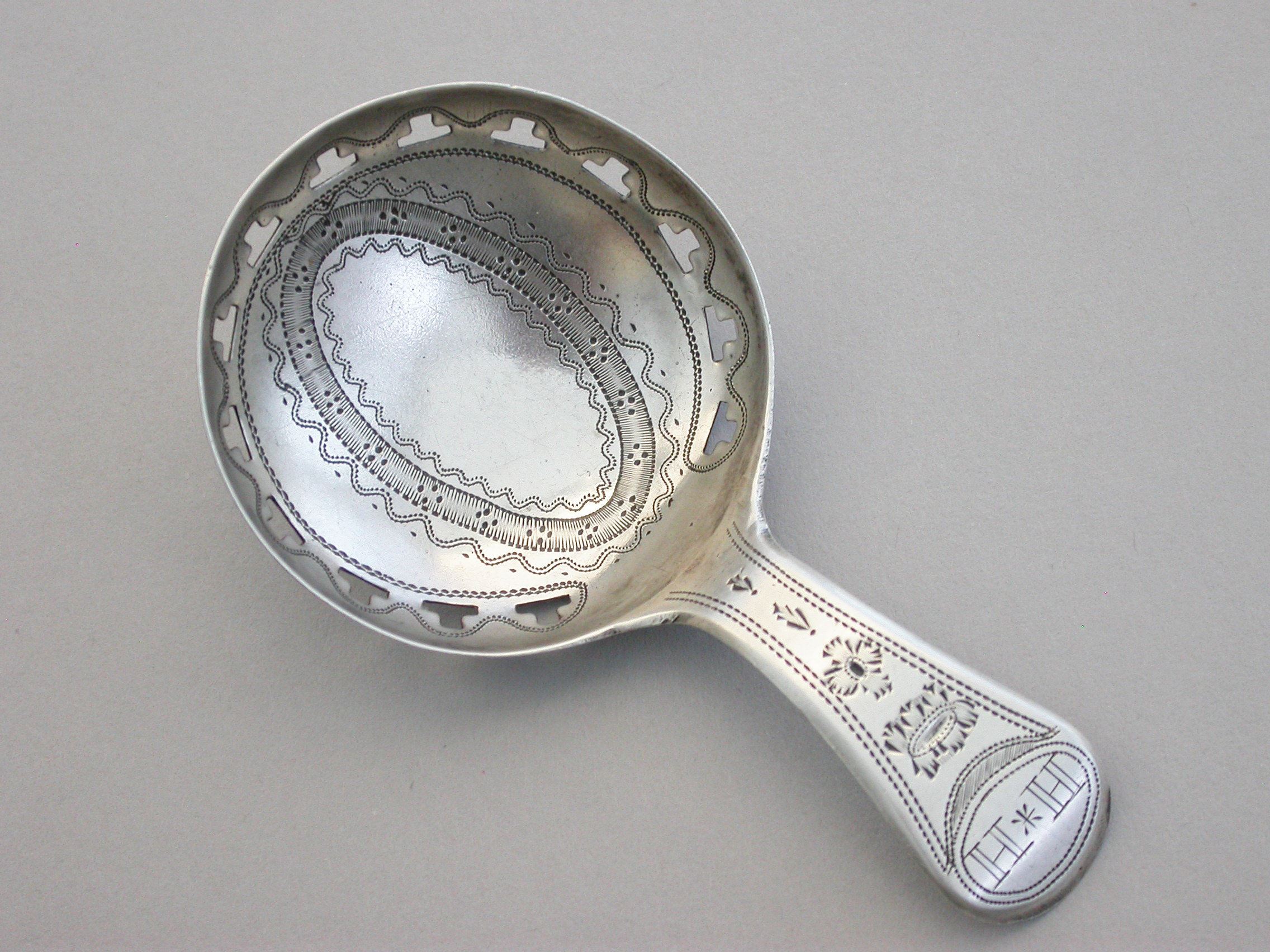
Cocks & Bettridge first registered their mark in August 1796 and their partnership lasted nearly 20 years. They produced a great variety of Spoons including a 'Thistle' and the 'Pastern Hoof', but a specialty is the superbly engraved 'Kidney Bean' with barbed Old English handle.
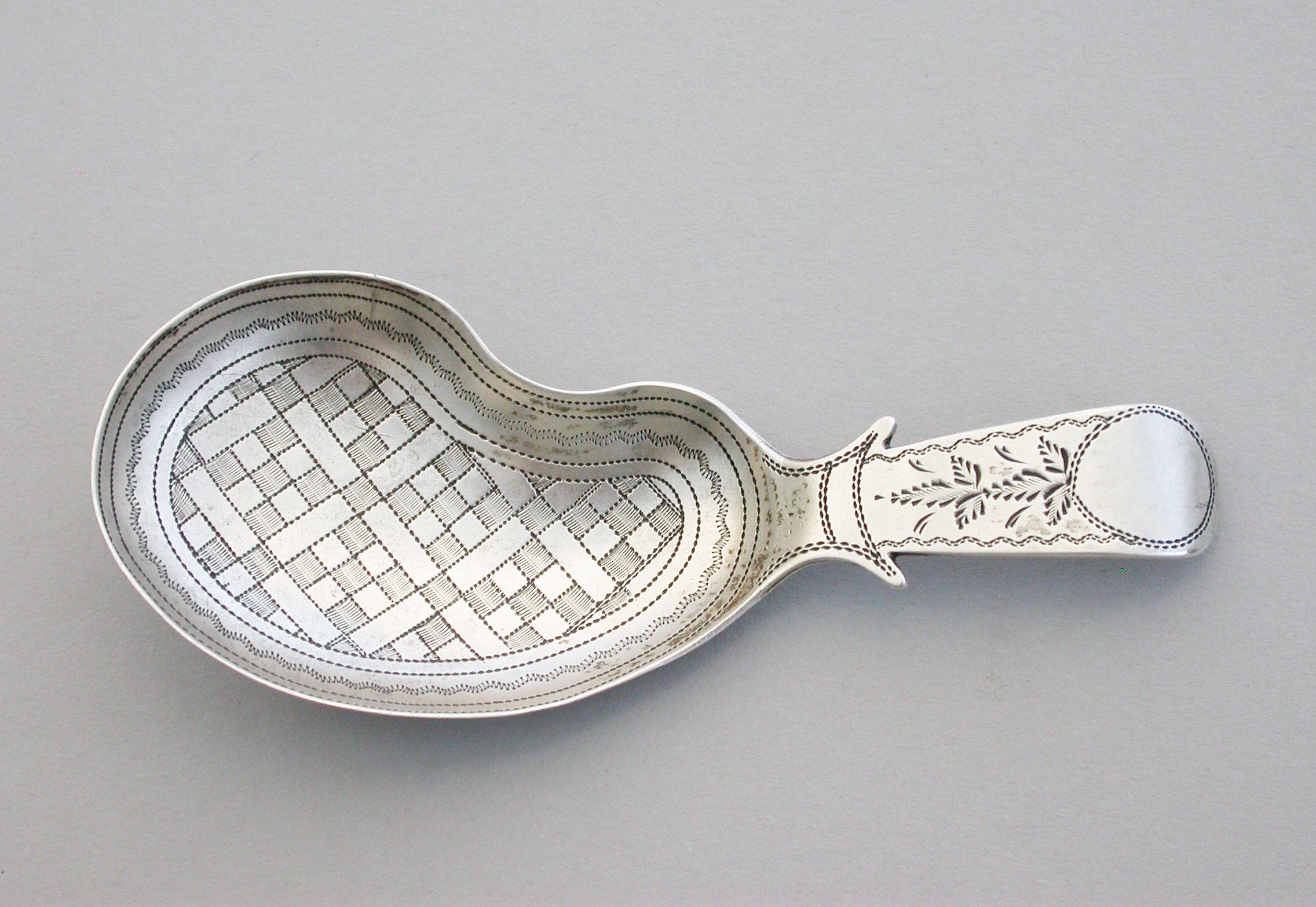
Quite which Samuel Pemberton it was (there were several) who made Caddy Spoons in Birmingham c1800-c1820 is uncertain, but 'SP' was amongst the greatest of all the Caddy Spoon manufacturers, with a very considerable output. He was a specialist in a number of forms instantly recognizable as his work and a few specimens that must be considered unique. He had a penchant for filigree and the example shown with the fluted sideways oval bowl is typical . The Pemberton 'Acorn' is also a classic.
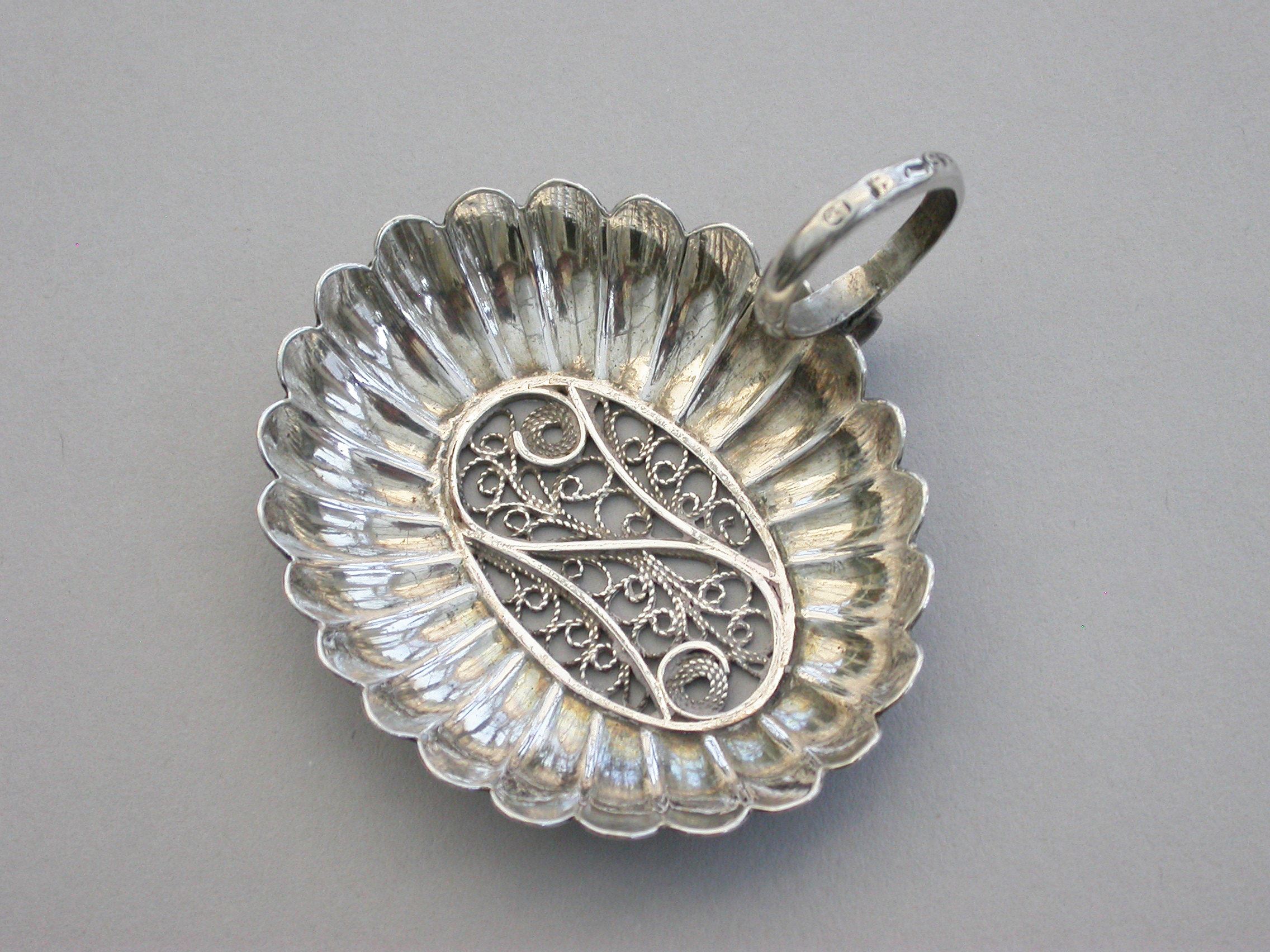 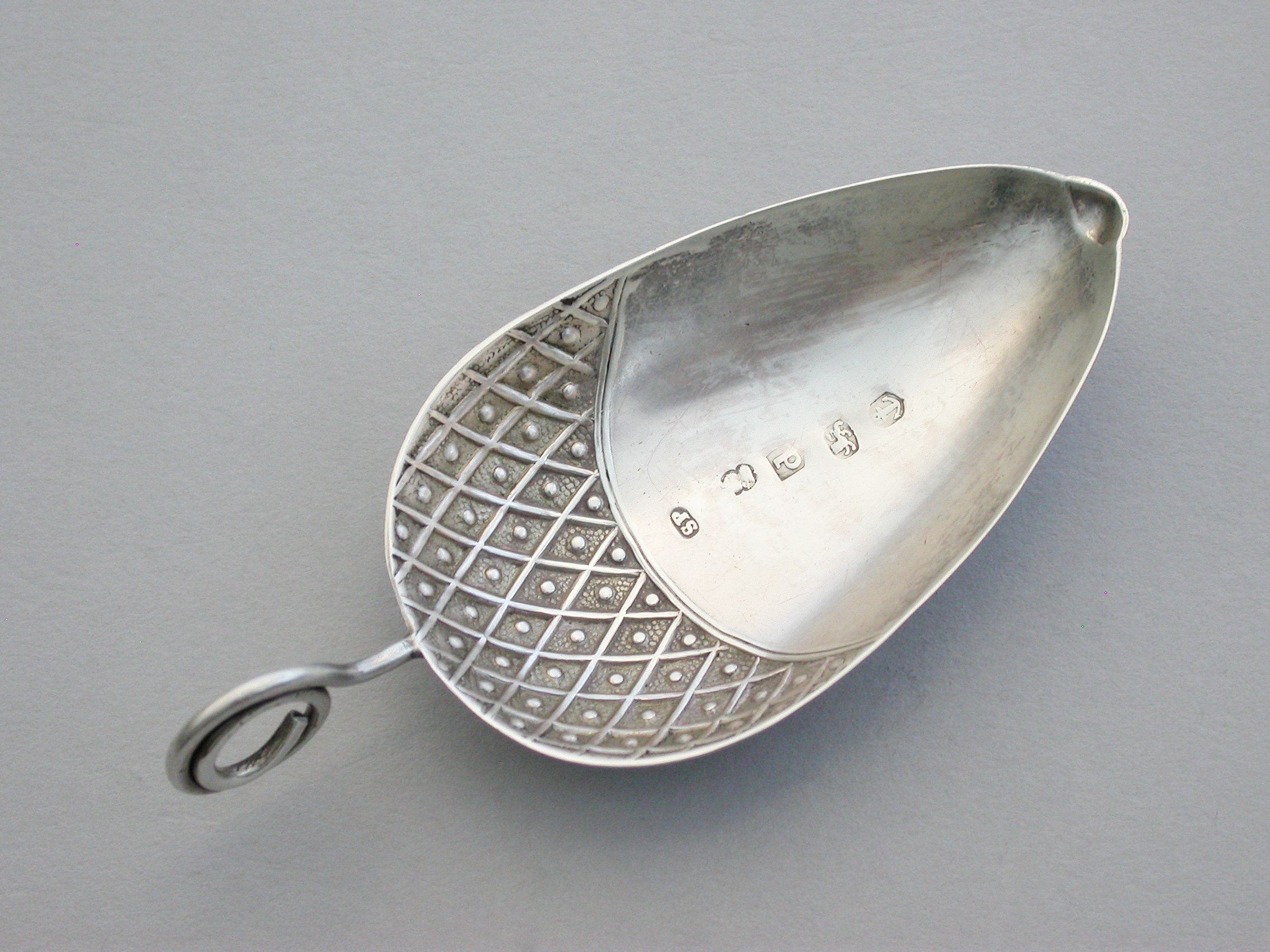
Unquestionably the finest of all the Birmingham leaf makers was Matthew Linwood. Linwood differed from his contemporary caddy spoon makers in that he was inclined to specialize, therefore his range of styles was more limited. At the same time the consistently high quality of his work was unsurpassed by any of his Birmingham rivals and his leaves alone merit special attention. The large and extremely well executed Alder and Lily Leaves are very scarce Spoons.
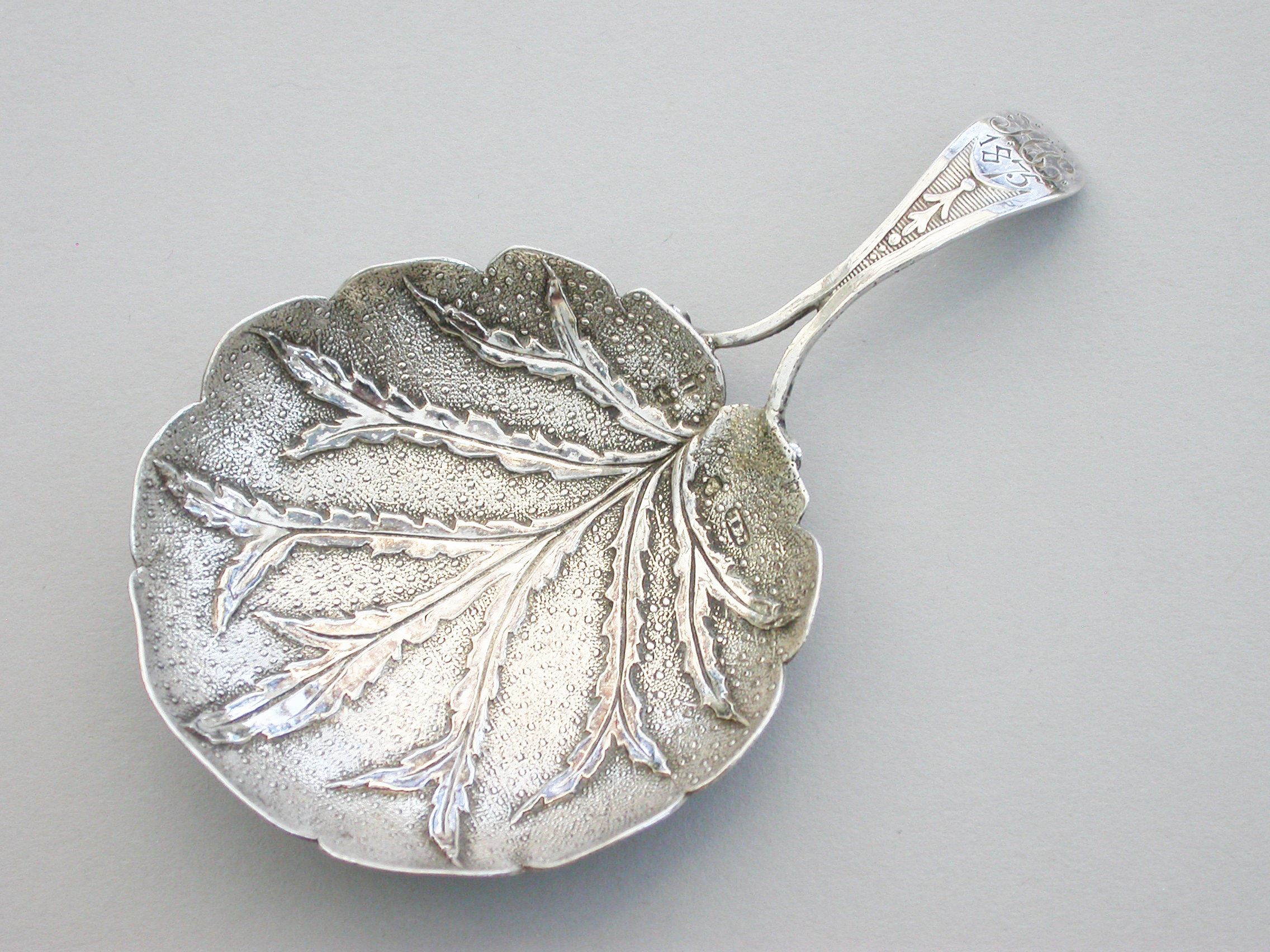 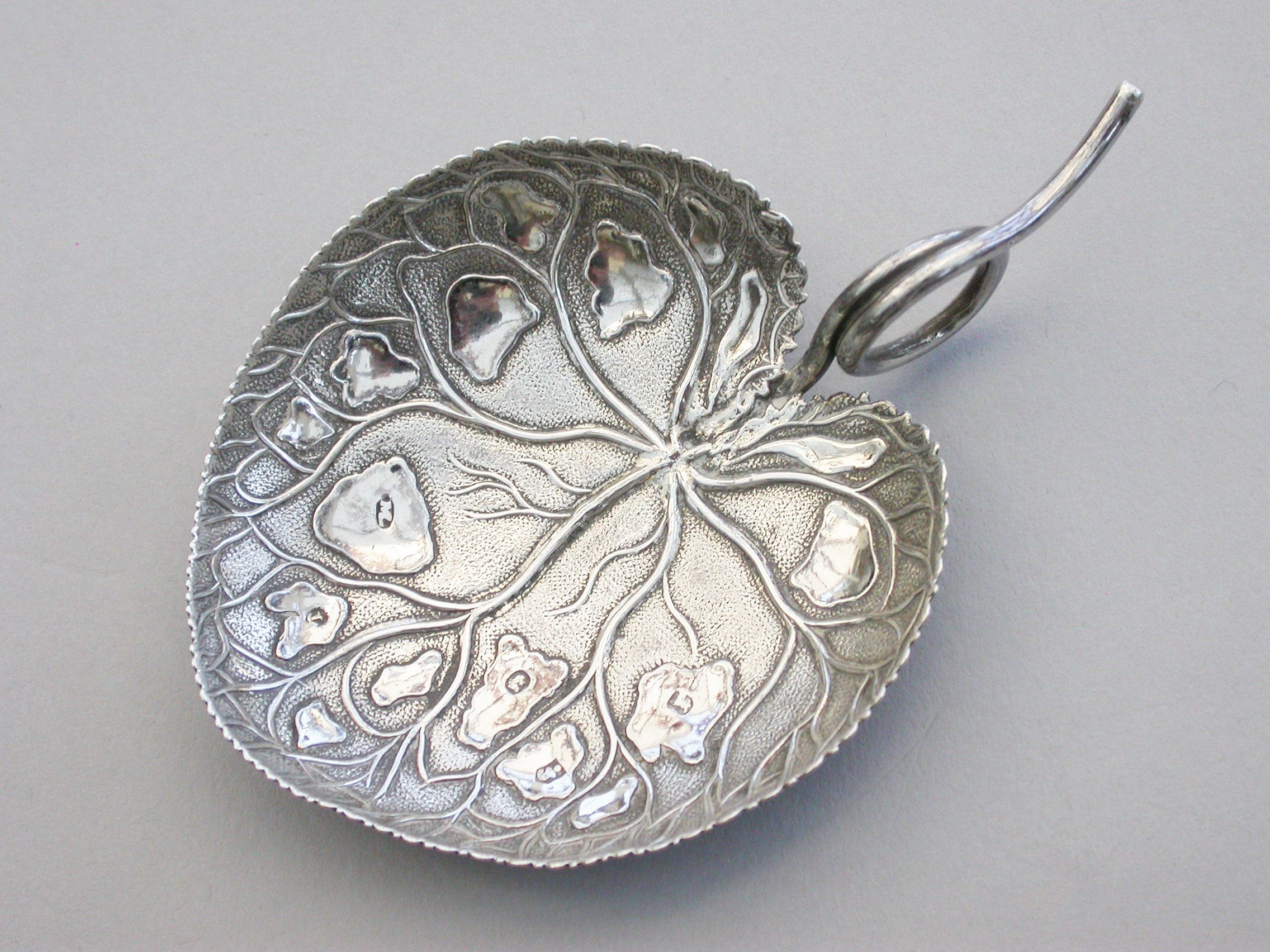
A distinctive maker from London in the early 19th century was Thomas James. His production was concentrated over a short period from about 1808 to 1815. Often large in size, his pleasing designs include a variety of bowl shapes and handles that had cut-out borders and were handsomely engraved. The two below were made in 1813 and 1815.
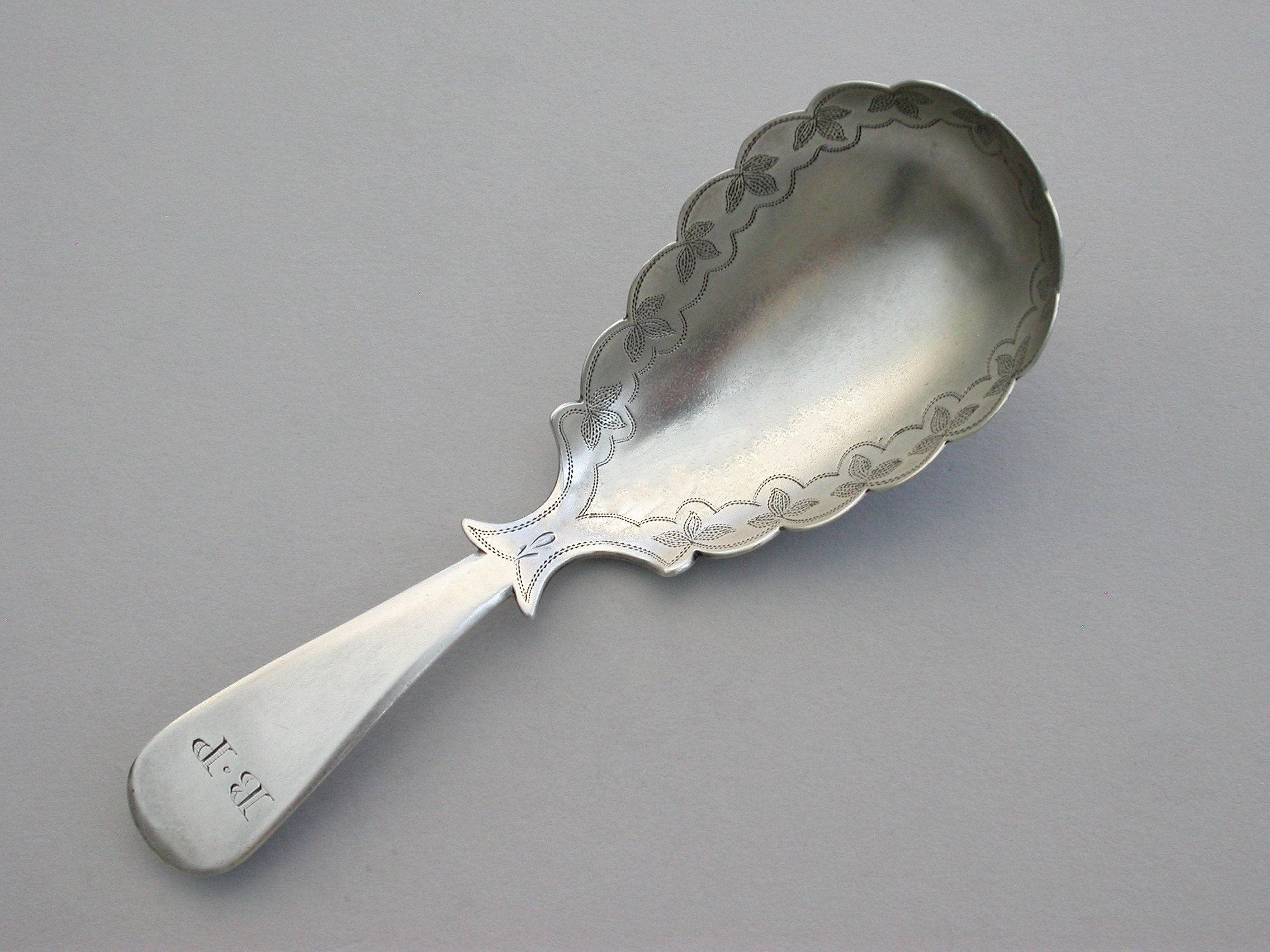 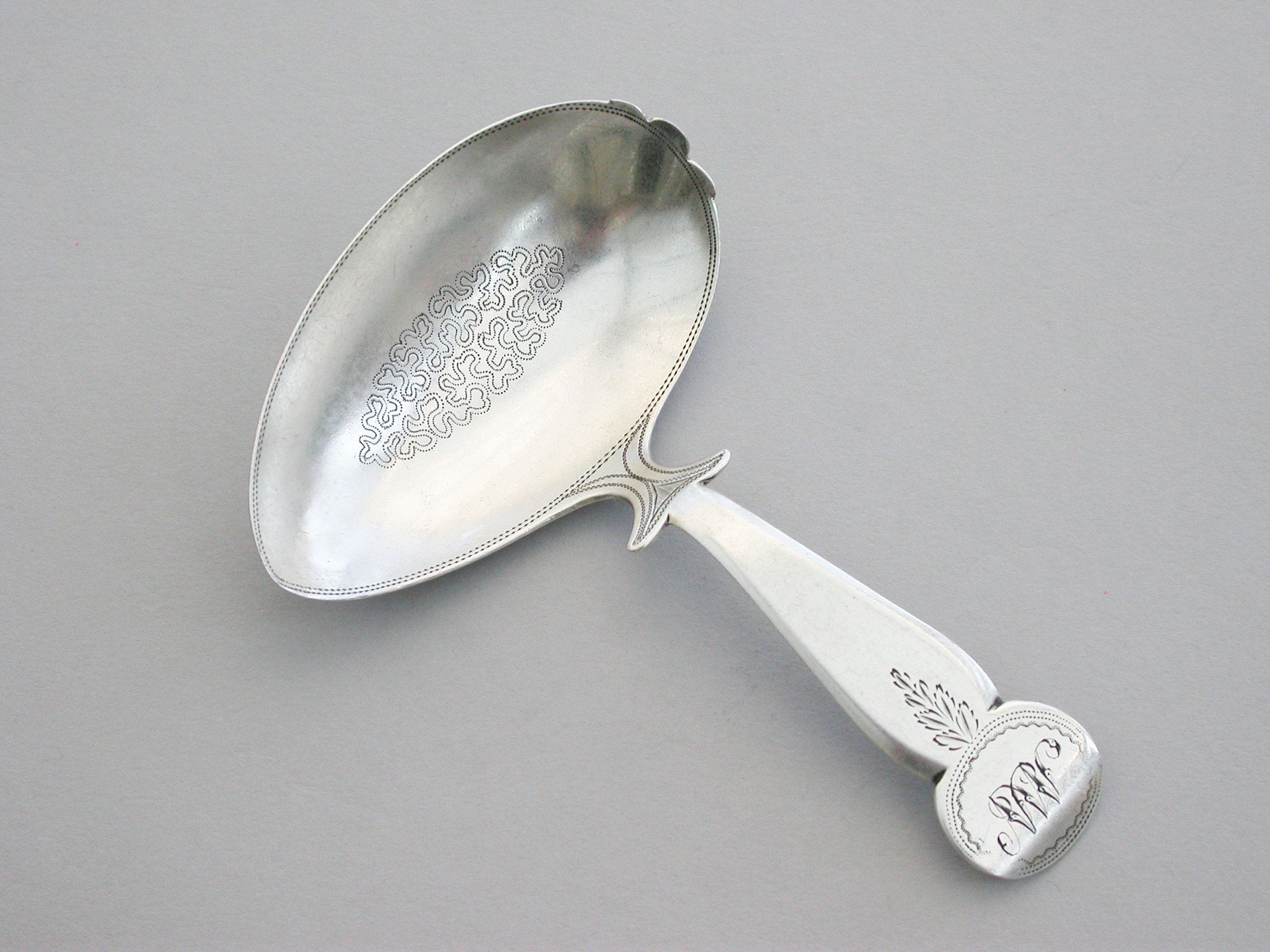
To view the whole collection of Caddy Spoons, please click here...
Featured Item
Victorian Novelty Silver & Enamel "Colonel Boxer Fuze" Vesta Case
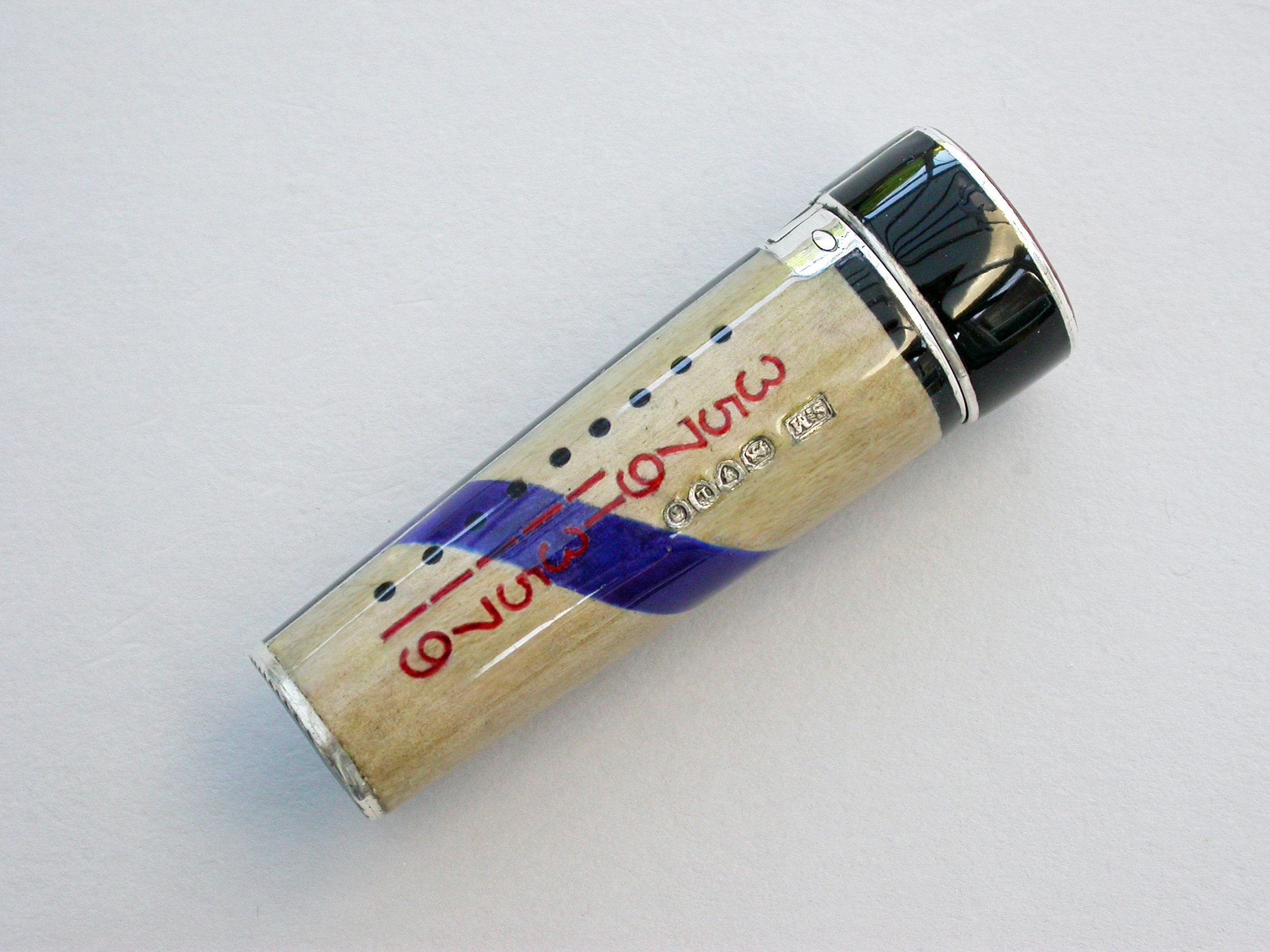 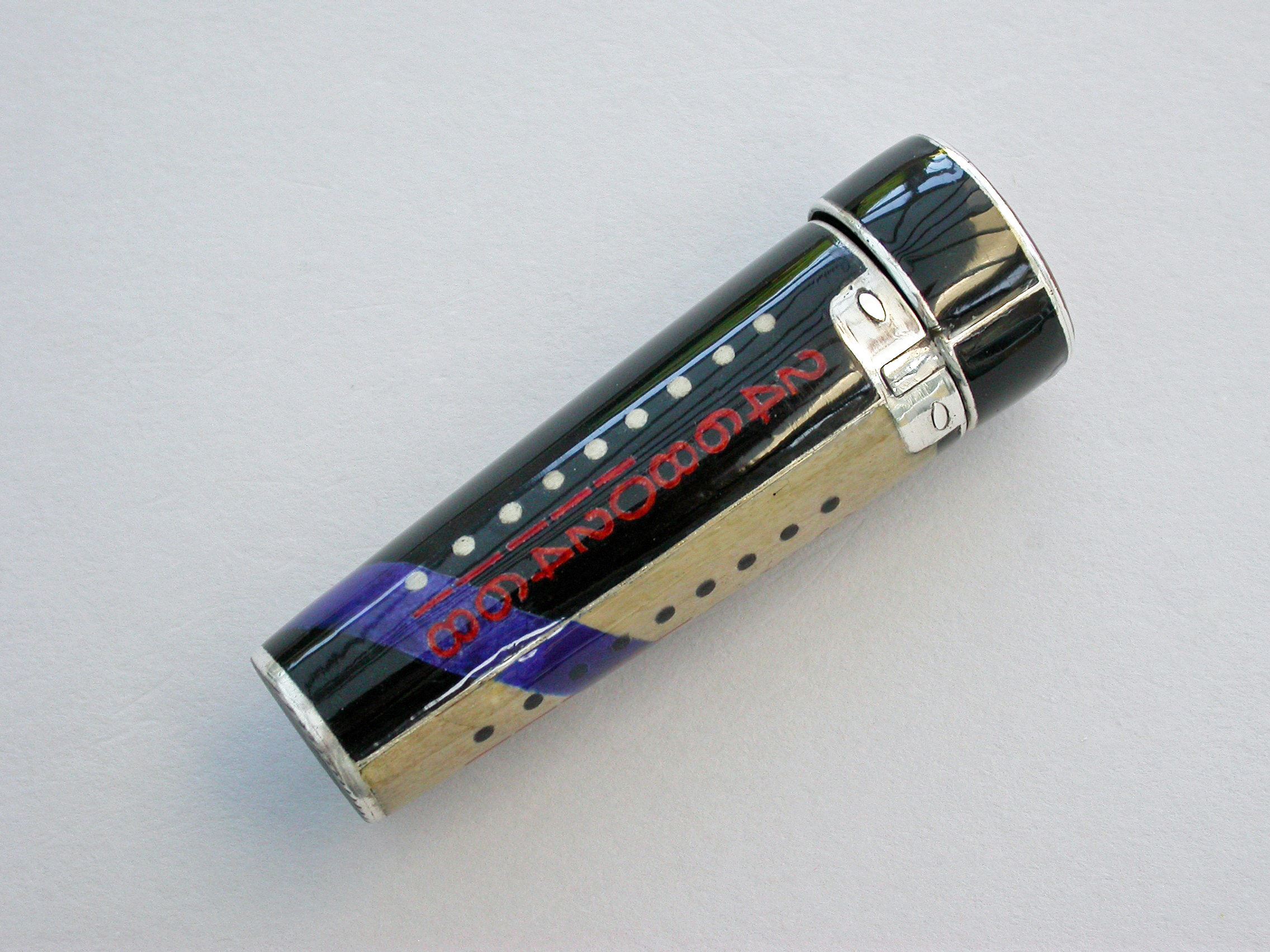
An extremely rare Victorian silver and enamel Vesta Case made in the form of a 19th century wooden artillery shell time fuze, invented by Colonel Boxer. Made by Samson Mordan & Co, London 1886.
Edward Mounier Boxer was a colonel in the Royal Artillery.
The wooden fuze cones had a central powder channel and holes drilled every 2/10th of an inch. They were painted white and black with odd and even tenths, clay prevented the powder spilling out.
The British "Boxer" wooden time fuze from the1870s, burned for maximum 9 seconds, adjusted by punching through applicable hole.
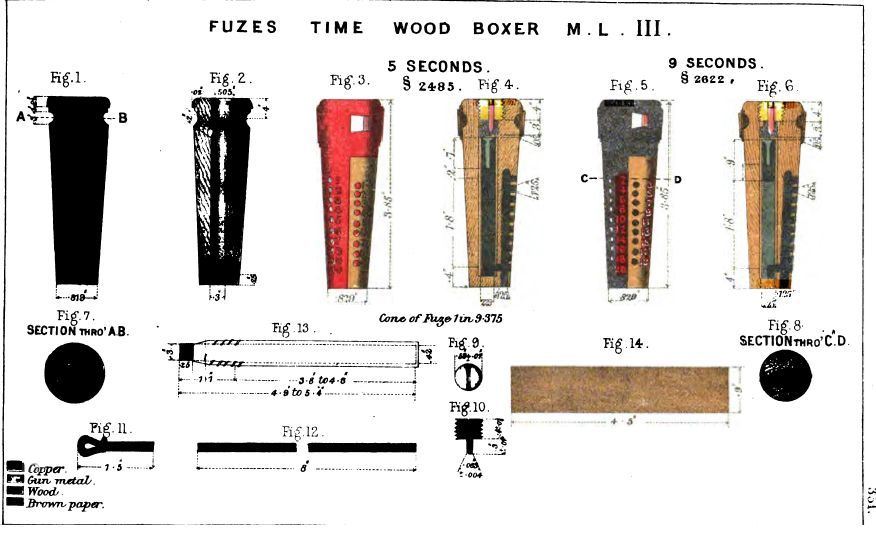
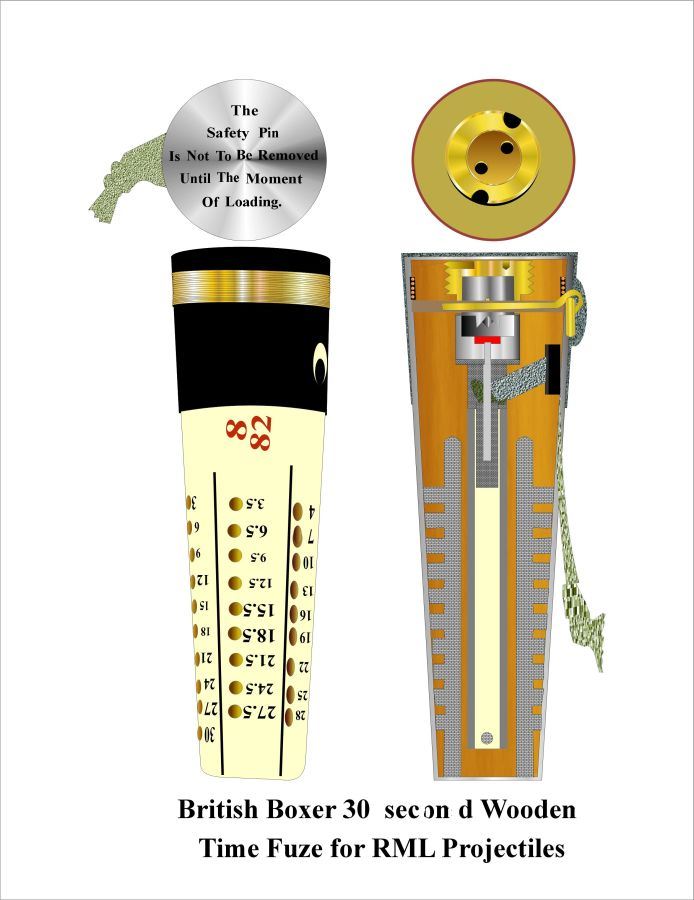 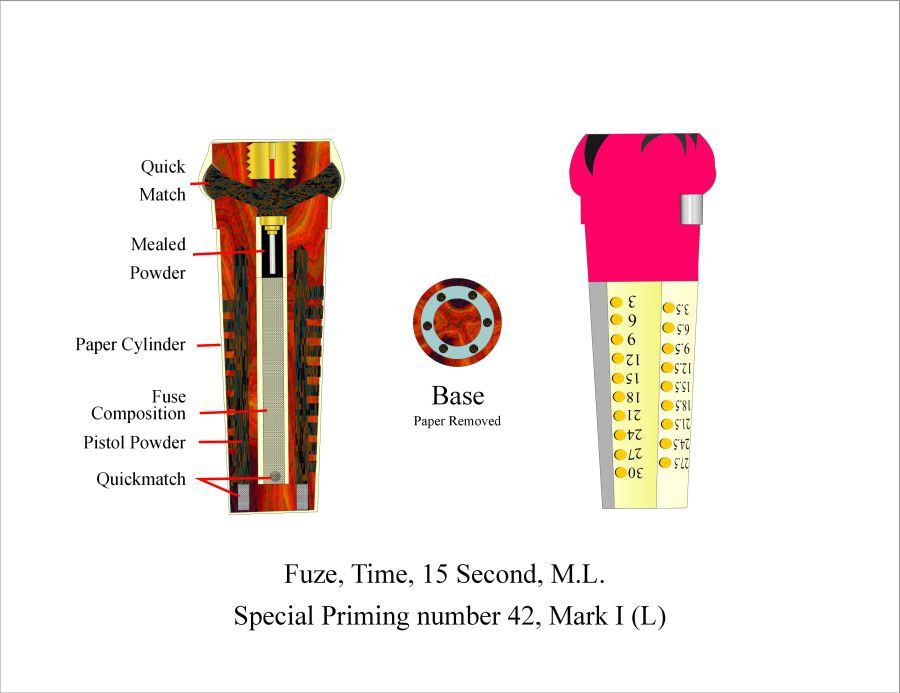 General Edward Mounier Boxer (1822-1898), FRS.
General Edward Mounier Boxer (1822-1898), FRS.
Biographical History - Source: The Engineer, 7 January 1898, p. 8.
Obituary: "...who died at his place, Upton, near Ryde, on January 2nd last, served exactly thirty years in the Royal Artillery, and for many years occupied the first place in England as an inventor of war material and artillerist. He was the son of Admiral Boxer, and the father of Lieut. Boxer, R.N., who was lost in the ill-fated Captain. He passed for the Royal Engineers, taking the first place, but received a commission in the Royal Artillery in December, 1839. He married as an extremely young officer Miss Payne, daughter of Colonel Payne, R.A. To this lady, indeed, he is said to have been engaged as a cadet. Very early in his career, Lieut. Boxer turned his attention to the improvement of war material. In those latter days of the long peace there was little encouragement given to such efforts. He was, however, appointed instructor to the cadets in artillery, and wrote a treatise on gunnery which was the standard work of its day. By the time the Crimean War broke out some of his inventions had been adopted, and Captain Boxer had been appointed Superintendent to the Royal Laboratory, and then came the opportunity of displaying his powers of resource, and his great capacity for work. The organisation of his department was considered a model in the way of order economy and production. While designing new stores, he exerted himself to patch up and improve existing ones in order to meet the great demands of the war and the "diaphragm" and "improved shrapnel" are examples of new and patched-up projectiles. He exerted himself, indeed, with such effect that the Secretary of State for War declared that it was owing to Captain Boxer's efforts that the siege of Sebastopol was pushed on, and the fire sustained as it was. The Boxer wood time-fuzes were of their kind very perfect, and when they arrived at the seat of war came as phoenixes to the gunners of the siege trains, who were commonly using wood fuzes of dates from 1795 to 1815. On one occasion when the French artillery sent a request for fuzes, and received in return a supply of these ancient stores, they brought them back, indignantly, saying:-"Nous ne voulons pas ces choses, nous voulons la fusee Boxaire." For his services at this time it is said that Captain Boxer was offered and refused a decoration, preferring a grant of money for the sake of his family. A special grant of money was accordingly voted to him. Admiral Boxer was directing the work at Balaclava harbour while his son was thus making ammunition. From this date war material was developed rapidly, and Colonel Boxer's designs were in some cases challenged by the formidable competition of Elswick. For rifled guns, however, as for smooth bores, the Boxer ammunition still held its own, so that when he left the service in December, 1869, there existed among other stores Boxer shrapnel shell for rifled and smooth-bore guns, Boxer time-fuzes for breech-loading and muzzle-loading guns, and Boxer fuses for all classes of smooth bore shells, the Boxer parachute light ball, Boxer rolled metal cartridges for Snider and Martini-Henry rifles, Boxer life-saving rocket, &c.
Personally, General Boxer was a remarkable man. He disliked prominence in public, but he read character and measured men curiously well, sometimes when there was little opportunity of doing so. He had an embarrassing habit of asking those employed under him some questions which they could not answer, so that they were apt to feel awkward in making reports to him. At the same time he was popular, and with his great capacity for work enjoyed leisure thoroughly. On leaving the service, his late foremen presented him with a testimonial. It is to his credit in his combined character of inventor and superintendent that Mr. Pettman, a foreman under him, declared that General Boxer had always encouraged him and recommended him for the pecuniary reward which he received for the well-known Pettman fuse, although General Boxer had himself a rival design. Whatever views may be entertained as to the employment of civilians and officers in our manufacturing departments, there can hardly be two opinions as to the value of an officer who combines the exact knowledge of the needs and the behaviour of projectiles in action, with powers of invention and organisation, and who also possesses great energy. General Boxer, in short, was a very strong man, and for such men we ought to find scope.'


|

|

I do hope that you will find this Newsletter informative and helpful and will allow us send it to you on a regular basis. I would welcome any feedback you may have, both positive and negative.
David W.A. Buck.
Steppes Hill Farm Antiques |
|

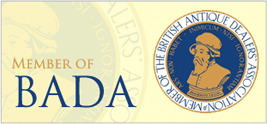
|

|
|

